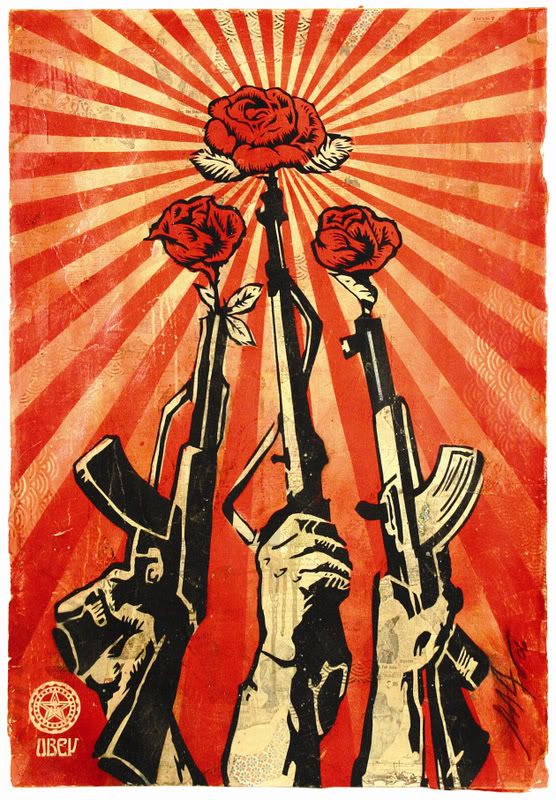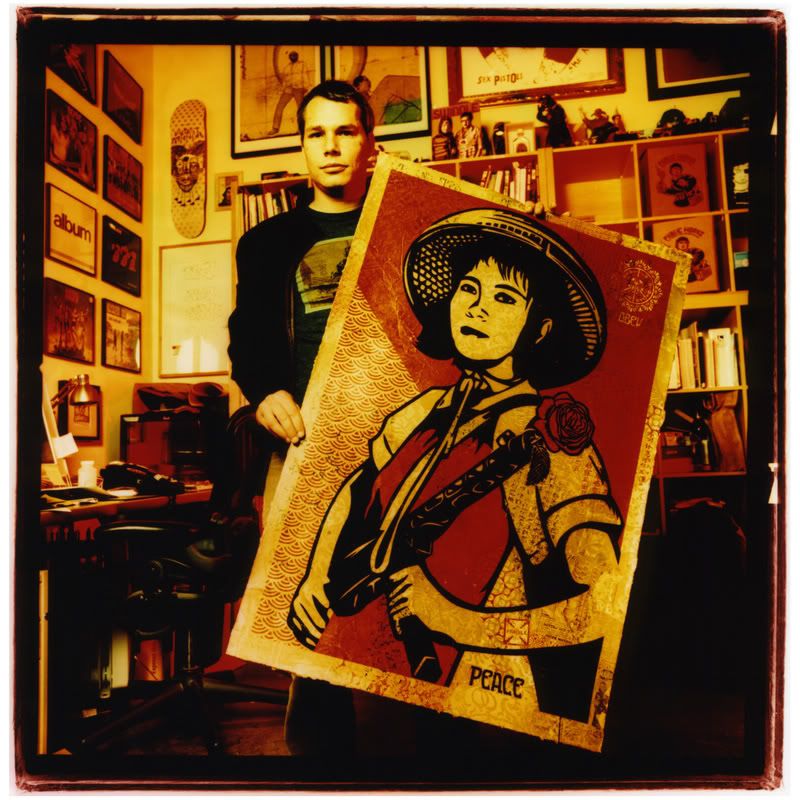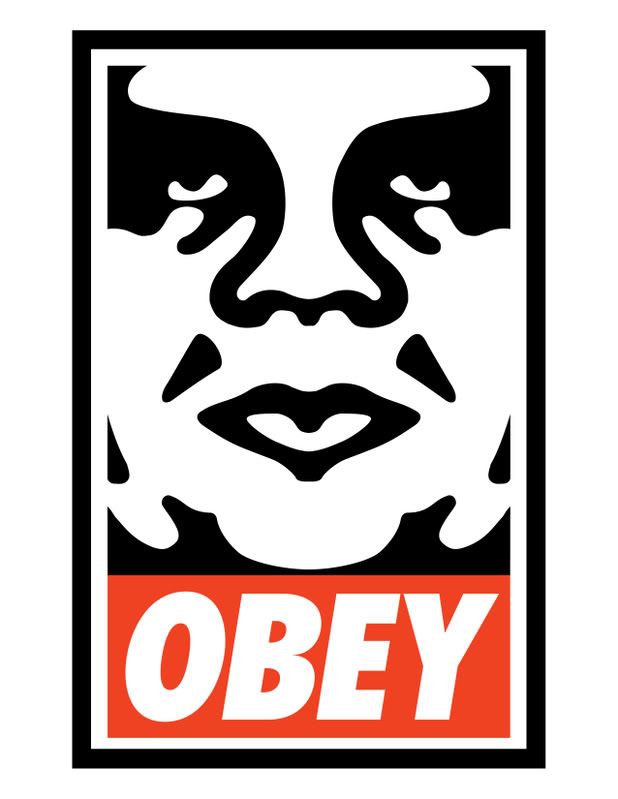Shepard Fairey: Supply and Demand
BOSTON/South Boston - Unless you’ve arrived only recently from another planet, you know that Shepard Fairey’s first museum exhibition, a 20-year survey of his images, is on view at the Institute of Contemporary Art, Boston. Fairey is the world’s most famous street artist, best known for his iconic red, white and blue “PROGRESS,” “CHANGE,” and “HOPE,” posters of Barack Obama. He made headlines in Boston over the weekend when he was arrested.
Fairey’s work is controversial. The artist’s “integration of design, popular culture, and politics places him in the current of artistic and cultural forces that shape our world today,” according to museum director Jill Medvedow. Others see him differently. “Guerilla” artist is a term often used to describe him. His powerful posters borrow techniques and images from advertising and propaganda, especially Chinese and Russian iconography. Moreover, he displays them around cities on abandoned buildings, lampposts, and fences, making him the bane of anti-graffiti activists. Misappropriating public places for his work has earned him 14 arrests.
Make that 15 arrests. Friday night, on his way to the museum’s VIP opening, Fairey was arrested by the Boston police. They did not immediately reveal why they arrested the artist, but he was a no-show for Mayor Thomas M. Menino (D) and other guests, some of whom may have paid as much as $500 to attend the gala.
Earlier in the day, there was news of an Associated Press photographer bringing suit for the misuse of one of his photographs, the one Fairey had found on the Internet as the basis for the Obama poster.
Fairey says that he first contemplated an Obama poster in 2004, when the young Illinois senator spoke at the Democratic Convention in Boston. The artist was impressed. He hesitated to create the poster, however, because his multiple arrests might be a liability to Obama. After Obama launched his campaign for president, Fairey made the poster and posted it with permission. Then he asked how Obama felt about it.
Obama’s typed response is included in the ICA exhibition. “I am privileged to be part of your art work and proud to have your support.” The resulting poster quickly spread over the world. Its image also appears on T-shirts, buttons, tote bags, etc. Recently, the original was hung in the Smithsonian Institute, Washington, DC. Fairey smiles when he describes how the staff handling it wore white gloves to protect his art.
The ICA exhibition is divided into themes – Propaganda, War and Peace, Stylized, Music, Portraiture, Hierarchies of Power, and Question Everything. Naturally, the first gallery, Propaganda, features the original Obey Giant project. In 1989, as a student at Rhode Island School of Design (RISD), Fairy created a stencil of the famous wrestler Andre the Giant and added the caption “Andre the Giant has a Posse.” He made stickers that he posted all over Providence. They caused a commotion. After a while, he simplified the image by cropping it. He changed the caption to “Obey Giant,” and then to just “Obey.” He says that is the message of all advertising.
“If my manifesto could be condensed to two sentences, they would be: Empower yourself and question everything,” he told an interviewer. “People are paralyzed by fears of failure and they think their efforts won’t make a difference.” He cites his Obama poster as a grassroots effort that has made a difference.
For the exhibition, Fairey curated a playlist of the music that inspires him. Visitors to the ICA may borrow an iPod at the front desk to listen, and log onto www.icaboston.org
To complement the ICA exhibition, several of the artist’s images have been mounted on buildings in Boston and Greater Boston. They include The Weekly Dig Building; The Boston Phoenix Building; Tufts Medical Center; the Garage on Dunster Street, Cambridge; and International Bike Center, Allston. For a complete list, visit the ICA web site at www.icaboston.org
The schedule of courses and programs planned around the exhibition is also listed on the web site. These include a lunchtime gallery talk with curator Pedro Alonzo at noon on February 12; a presentation with speakers in various disciplines addressing “Design as Social Agent” from 10a.m. to 5p.m. on April 4; and a bike tour of Fairey’s public works with Pedro Alonzo at 10a.m. on May 17, and 10 a.m. on June 28.
“Shepard Fairey: Supply and Demand” will be at the ICA through August 16.
Hope




